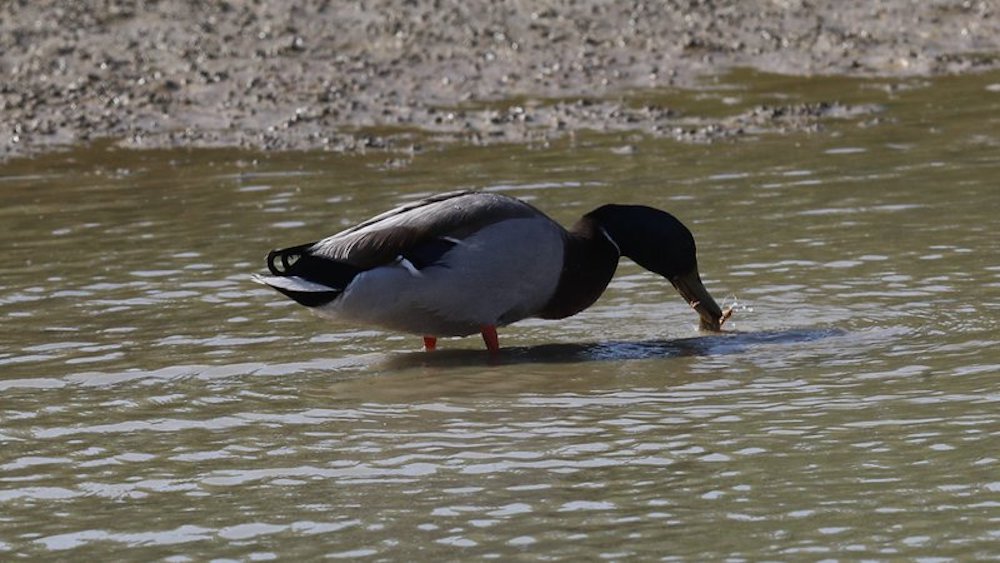LITTLE ROCK – Arkansas waterfowl hunters endured a deep freeze leading into last weekend, and now temperatures will take an upward trend as the state’s 60-day season has reached its midpoint. There are no more splits left in the season as it runs uninterrupted through Jan. 31.
Long-range weather forecasts indicate temperatures ranging as high as 68 this weekend and staying in the 50s over the next 10 days. But while the temps may be mild, the forecast is also calling for a potential drenching on Monday in the neighborhood of that much-sought-after 4-6 inches that will cover Delta fields and overflow banks and levees, providing ideal duck habitat. Most of Arkansas Game and Fish Commission’s areas managed for waterfowl hunting have plenty of water coverage now, though, after a very dry early season. They, and the ducks, could always use more.
Anecdotal reports surfaced of more mallards arriving as far south as George H. Dunklin Bayou Meto Wildlife Management Area last Wednesday ahead of the cold air blast roared through Arkansas Thursday. There was only minimal landscape coverage of winter precipitation in the state, but states to the north and northwest received a good blanket of snow and ice. Other anectodal reports passed along to the AGFC were from private land hunters, who noted more mallards harvested this year than last for the month of December, which fell in line with results of the AGFC’s December aerial survey.

In the days leading up to that arctic winter front, AGFC waterfowl biologists completed their December aerial survey, noting the biggest concentration of ducks in the Bayou Meto-Lower Arkansas River, Black River-Upper White River and Cache River survey zones. Of the nearly 1.14 million mallards estimated in the Arkansas Delta during the survey, 75 percent of all ducks were in those zones. The Delta mallard count numbered 480,846 ducks, the most mallards seen in the December survey count since 2018.
Arctic goose population estimates were nearly 1.3 million along with 181,356 greater white-fronted geese.
The big weather blast last week coincided with the last break in the Arkansas waterfowl hunting season Dec. 24-25, but that marks the last stoppage in the season. Ducks, geese, mergansers and coots all can be hunted through January. Also, Arkansas’s second dove season is underway through Jan. 15 (we mention that mainly because we noticed a significant number of doves around the Arkansas River in recent days as the cold front blew through).
Because the inclement flying conditions of earlier December pushed the flights several days later, the survey team of Jason Carbaugh, Buck Jackson, Cameron Tatom and Alex Zachery were scheduled to be back up in the air quicker than usual, with the midwinter survey scheduled for next week beginning Jan. 2.
Looking Northward
The Missouri Department of Conservation completed its waterfowl survey Dec. 12. Since then, hunting at Missouri’s conservation areas (akin to the AGFC’s wildlife management areas) peaked in the south portion of the state by Dec. 22, when most areas recorded average hunter harvest of around 2 ducks. Better hunting was seen at more areas around Dec. 15. In Missouri, hunters sign in at the conservation areas and record their harvest, which is then collected and publicized by the MDC.
Andy Raedeke of the MDC published this report in Dec. 12: “Very little has changed since the last report. Temperatures were 0-5 degrees above average for most of Missouri except for northwest Missouri where they were 0-5 degrees below normal. Precipitation was below normal for much of the state. North Missouri received 0.5 to 1 inches and south Missouri received 1-2 inches over the past two weeks. Good habitat continues to be mainly limited to private and public wetlands with pumping capabilities.
“Managers did not report any significant duck migrations. This week’s tally of 896,051 ducks was similar to the previous survey’s estimate of 917,394 ducks, 12% higher than the previous five-year average of 800,874 ducks, and 26% higher than the previous 20-year average of 713,869 ducks. Our estimate of 680,049 mallards was 7% above the previous five-year average of 634,020 mallards and 15% above the previous 20-year average of 591,989 mallards. Mallards comprised 76% of the total ducks compared to 67% last year, 80% for the previous 5-year average, and 83% for the previous 20-year average. Snow goose numbers declined from 228,760 to 97,762. We also tallied 15,557 white-fronted geese, and 3,376 Canada geese.
Raedeke noted that Missouuri was also seeing cases of Avian Influenza in December.
Continue Vigilance With Avian Flu
Hunters are urged by the AGFC to maintain a vigilant lookout for any birds that might be infected or suffering from Highly Pathogenic Avian Influenza. HPAI has been a concern of wildlife biologists this late fall and winter, especially with much evidence of it seen recently among migrating snow geese and other waterfowl and wintering birds in Arkansas. Hunters, outdoors enthusiasts and wildlife watchers are asked to report instances of dead or sick waterfowl that they encounter in the wild. The risk of humans contracting the disease remains low, but hunters can help further minimize that risk by following a few simple precautions (see below). Anyone who observes concentrations of sick or dead birds should report their sighting by using the AGFC’s Avian Influenza Reporting Form.
More information on avian influenza information is available at AGFC, Ducks Unlimited, and USDA APHIS’s website.
Bag Limits
Remember: Daily bag limits are the same as seen in recent years. Hunters make harvest a bag limit of 6 ducks, which may include no more than 4 mallards (2 hens), 1 scaup, 3 wood ducks, 1 pintail, 2 redheads, 2 canvasbacks, 2 black ducks or 1 mottled duck. Beyond those exceptions, the limit is up to 6 ducks of a species, including teal. The merganser daily bag limit is 5, with only 2 hooded mergansers allowed. The daily bag limit for coots is 15. Non-lead shot must be used for waterfowl hunting in Arkansas. The possession limit for ducks, coots and mergansers is three times the daily bag limit. The daily bag limit for greater white-fronted geese 3, up from last year’s 2 birds per day. The daily limit for snow, blue and Ross’s geese is 20 per day.
Waterfowl season in Arkansas will closes at sunset Jan. 31.


